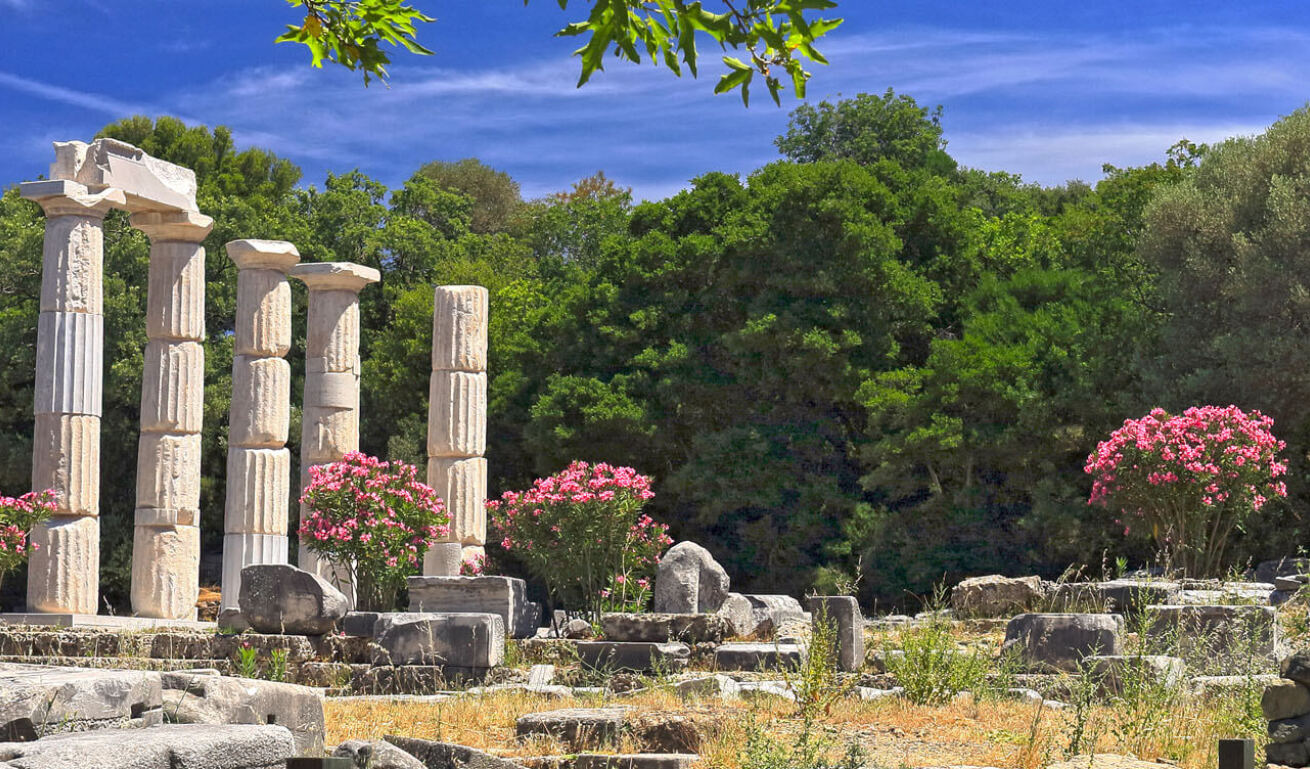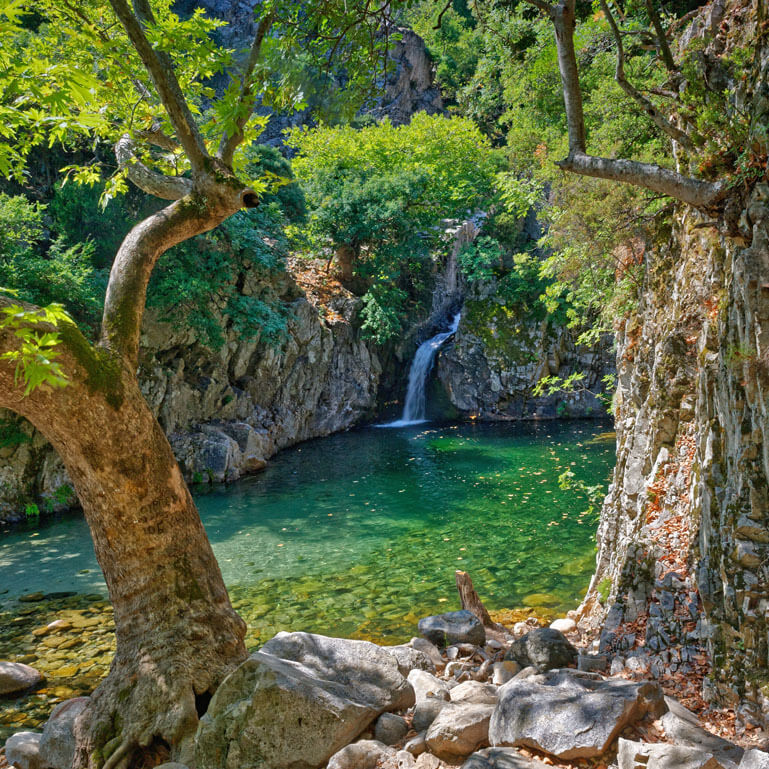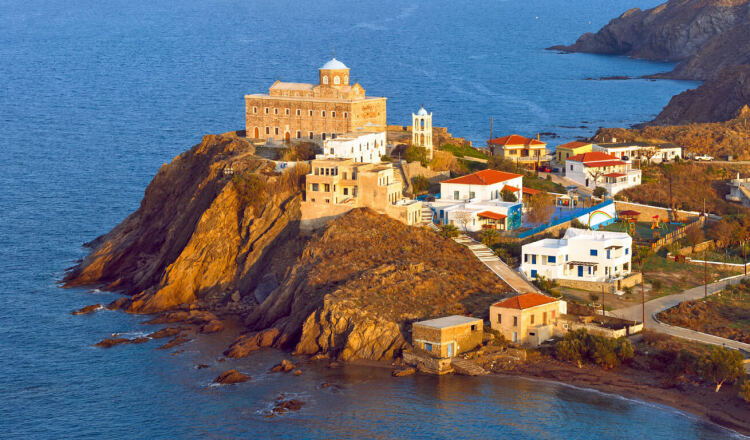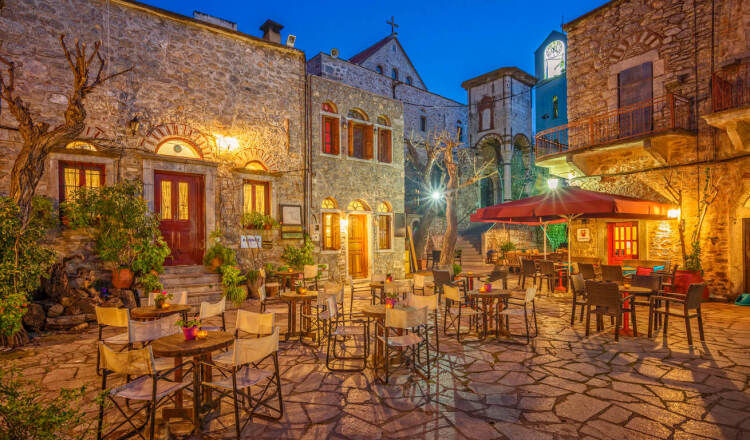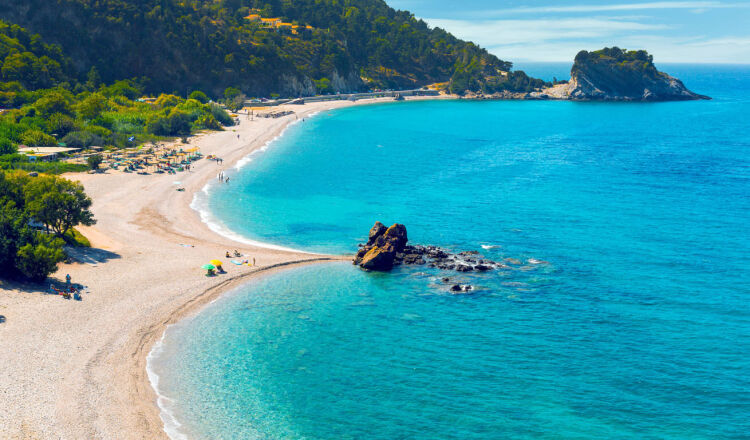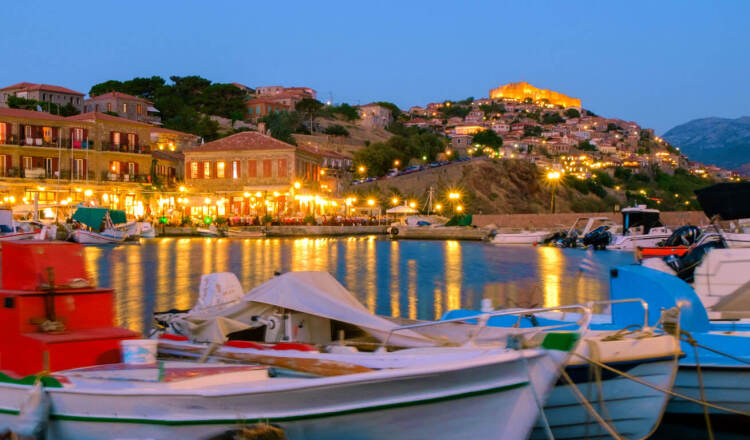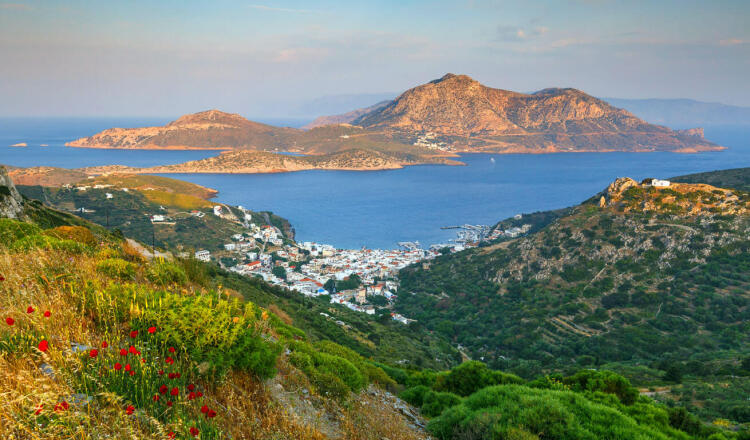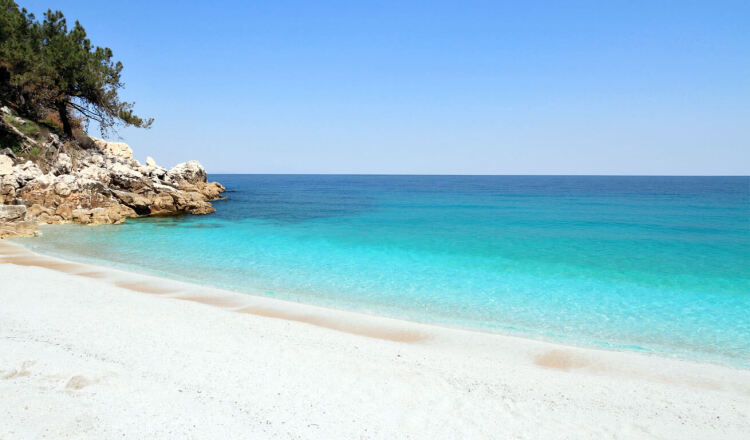
Samothrace
NOW
26 °C
Next 5 days
-
FRI
33 °C
-
SAT
35 °C
-
SUN
36 °C
-
MON
38 °C
-
TUES
37 °C
Source: National Observatory of Athens /meteo.gr
Home to one of the highest mountain ranges in the Aegean Samothrace is an unspoiled and majestic Greek island where nature is still in its wilder forms. Visit its clear streams of cascading waterfalls and rock pools for swimming and enjoy the green landscapes even in late summer.
An island weighed down by history
Worth visiting:
- The Sanctuary of the Great Gods, site of a pre-Hellenic cahthonic cult of Anatolian deities (Cabeiroi). The religious activity in the area spans 1100 years (7th c. BC - 4th c. AD). The major monuments of the Temple Complex are: the Propylon (285-281 BC), a monumental gateway dedicated to the Great Gods by the king of Egypt Ptolemy II Philadelphus, the Sacred Circle (end of 5th c. BC-beginning of 4th c. BC), the votive monument of Philip Arrhidaeus and Alexander IV (323-316 BC), the Anaktoron (1st c. BC), where initiation to the first degree (“myesis”) took place, the Arsinoeion, a large tholos (288-281 BC), the hall of choral dancers (Temenos), a large marble building with a key role in the worship of the Great Gods (c. 340 BC), the Hieron (325-150 BC) used for “epopteia”, the second degree of initiation, a stoa (1st half of the 3rd c. BC) that accommodated the temple visitors, the Nike monument (early 2nd c. BC) where the famous statue stood on a ship’s prow commemorating the victory of Rhodians over the fleet of Antioch III the Great.
- The Archaeological Museum (tel: 25510-41.474), where the archaeological site’s major finds are on display.
- The three-aisled Early Christian basilica (5th-6th c. AD) in commemoration of the visit of the apostle Paul. Only a few traces of its foundations can still be discerned.
- The medieval castle of the Gateluzi family (1431-1433): The castle’s towers stand high on a hill overlooking the sea.
Samothrace NATUREally…
Stunning natural surroundings featuring rich vegetation among lakes and rivers will be etched on your mind forever. What is really special to the northern part of the island is its microclimate which favours a flora pandemonium. High altimeters are prevailed by plane, oak, cedar, and chestnut trees, while the lower parts look like a jungle of shrubs: over 20 species of them grow on Samothrace. Where the land is suitable for grazing, the wind bears the aromas of nature: thyme, oregano, and other herbs.
The island was once covered almost exclusively by oaks. The Martini Forest, lying between Therma and Karyotes, is a perfect example of what is left from that period.
Hundreds of crystal watered streams flow from mount Saos to rush through the forests all the way to the sea. On their way, they form waterfalls and stone basins, the so called “vathres”. As a matter of fact, the streams and the waterfalls are the landmarks of the island. A pair of the best of those are the stream of Foniás (=”killer”) and its tallest waterfall (Kleidwsi – 35m high). A nature wonder in the form of a waterfall is situated in the Northeast; it’s Kremastó. The water there goes through some iron rocks to obtain a sweet, reddish colour before fiercely ending into the sea. Behind the water mass there is a cave to be explored. Other well-known waterfalls are Kakiá Pláka, Karyá, and Griá Váthra.
Along the north and the eastern coastline there are wetlands formed seasonally. Migratory birds call at the mouth of Foniás, at the wetland of Vdelolimni, whereas the lagoon of Agios Andreas near Kamariótissa is popular with birdwatchers.
But don’t forget you are on an island with rugged, mostly pebbly beaches, some of which are accessible only by boat. The beach of the Gardens with the black and gray shiny pebbles stands out. In the south, there is the only sandy –thus most cosmopolitan- beach of the island, Pachia Ammos (= “thick sand”) where you can marvel at the –perched-on-a-steep-rock chapel of Panagia Krimniotissa. Rent a boat here for a tour around the otherwise inaccessible areas of Katarti, Spilies, Vato, Kremasto, Grias ta Pania, and Gyali. The fascinating bottom of the sea and the underwater life abundance appear transparent through the crystal clear waters.
An alternative tourism paradise
The imposing mountainous heart of the island paired with its pristine nature are just what explorers and adventure lovers could ever wish for: crossing gorges, trekking, mountaineering, mountain bike, paragliding, rafting, kayak, diving will be amongst your choices if you want to go active.
But Mother Nature has been generous to Samothrace in geothermal richness too: sulphurous therapeutic thermal springs welcome you to the village of Therma and to the spa facilities, where Greeks and foreigners seek and find health and wellness.
In the arms of hospitality
Chora, a traditional village hanging on steep slopes, is the enchanting capital of Samothrace. Its cobbled streets lead high on the hill to the medieval castle of the Gateluzi family. The Folklore Museum and the Church of the Assumption (1875) are worth a visit here.

BY SEA
Samothrace is connected to the port of Lavrio and the route lasts about 15 hours, but also to the port of Alexandroupolis and the route lasts about 2 hours.
